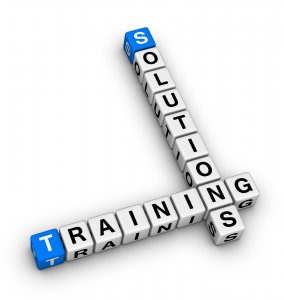 There are many ways to develop people: from classroom based group training and self-study using e-learning, to one-to-one coaching sessions. All have their place and help to create a truly blended approach to learning. However, with the focus on meeting individual needs, the use of one-to-one coaching is becoming an increasingly popular developmental tool in organisations. If you are going to provide coaching for your people there are a number of important points to bear in mind.
There are many ways to develop people: from classroom based group training and self-study using e-learning, to one-to-one coaching sessions. All have their place and help to create a truly blended approach to learning. However, with the focus on meeting individual needs, the use of one-to-one coaching is becoming an increasingly popular developmental tool in organisations. If you are going to provide coaching for your people there are a number of important points to bear in mind.
Firstly, you should never use coaching to resolve an issue which is in fact a supervisory issue. If your employee is not getting the results they should and is unwilling to change then coaching is not the right intervention. For coaching to be effective the person being coached (the “coachee”) must willingly enter into the coaching.
Coaching is trust based, so never force someone to be coached by someone they don’t trust. Trust will only develop if the fit is right for both parties.
Coaching is about behavioural change and as such is very different from training (which is about knowledge and skill development) and counselling (which is about providing emotional support). If these differences aren’t understood by you or the coachee then there may be unrealistic expectations and you might both be expecting something different from coaching.
Pure coaching draws on the inner knowledge of the coachee and so is particularly beneficial for those in a more senior role, where their experiences and knowledge make it a very effective development tool. Whilst coaching can be used for middle and junior roles it may not be as effective as good interactive group training, simply due to their lack of inner knowledge.
Much of what is discussed in a coaching session will need to be treated as confidential. It is, therefore, good practice to agree in advance the level of confidentiality that the coach will maintain in order so that the coachee feels confident to open up in the coaching session. If the coachee thinks that everything they discuss during coaching will be relayed back to their line manager then this openness will not be present.
Coaching is provided to help the coachee resolve the current issues and problems they face. Therefore, every coaching session needs to start with a clear identification of the problem that needs to be solved. The purpose of the GROW coaching model, which is taught on our coaching skills course and used by our own expert coaches, helps ensure that the end (goal) is defined and the starting point (reality now) is understood.
The coaching goals need to be defined by the coachee, not imposed by the coach or the coachee's line manager, otherwise the coaching will not be effective.
As with any training and development intervention, the effectiveness of coaching should be assessed. The coachee's company will want to ensure that the coaching relationship is working and this can be done through staff surveys to check whether their needs are being met. Anecdotal evidence of this nature is usually easy to collect. These qualitative measures are useful to collate and share throughout the business. To this end it is important to provide time for both the coach and coachee to self-evaluate their experiences.
